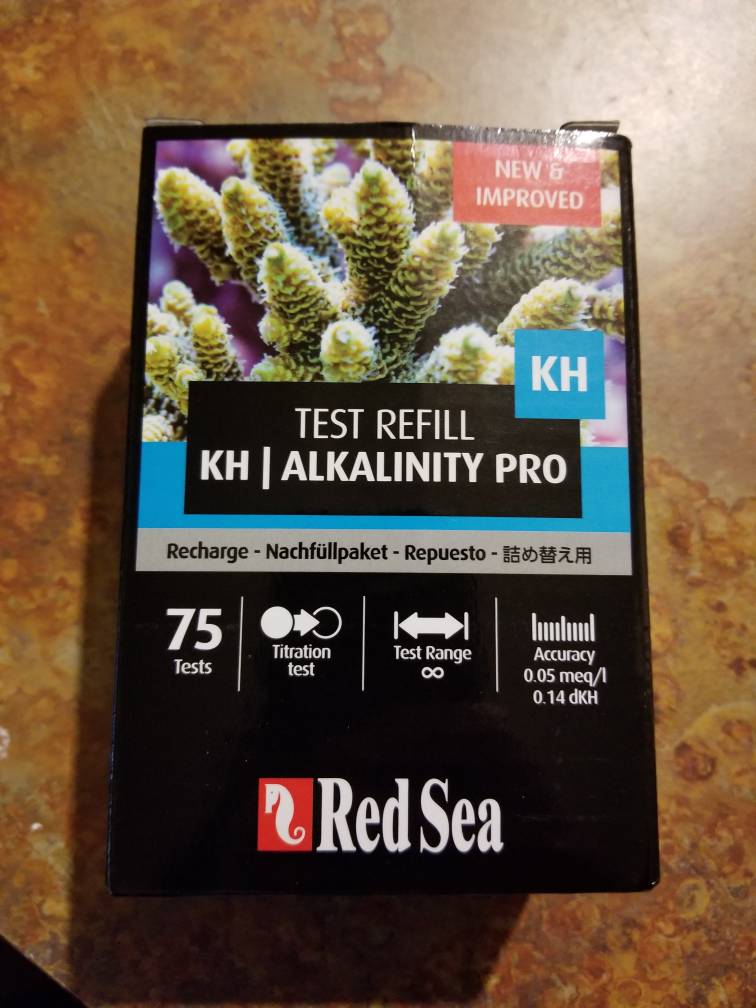Just throwing this out there, if you buy one of the "New and improved" Red Sea Pro Alkalinity refill kits the endpoint color has changed. The new endpoint is green.
I just got a refill and was a bit confused with where I was supposed to stop. The new test will go from blue to green to yellow.
I contacted Red Sea and the new endpoint is when you turn green. Yellow is overshooting the color change. They are waiting on new reference cards to come in.
Happy reefing!

I just got a refill and was a bit confused with where I was supposed to stop. The new test will go from blue to green to yellow.
I contacted Red Sea and the new endpoint is when you turn green. Yellow is overshooting the color change. They are waiting on new reference cards to come in.
Happy reefing!



















